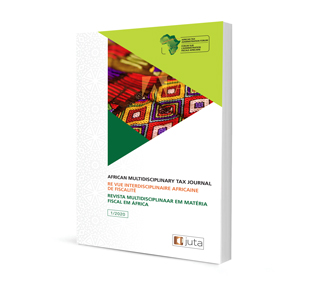
Analysis of Tax Compliance Determinants and Property Owners Socio-Economic Profile in Benin
Authors: Jonas Fassinou, Pam Zahonogo and Damas Hounsounon
ISSN: 2709-8575
Affiliations: Unité de Formation et de Recherche en Sciences Economiques et de Gestion, Université Thomas Sankara (ex. Université Ouaga II), 12 BP: 417 Ouaga 12, Burkina Faso; Unité de Formation et de Recherche en Sciences Economiques et de Gestion, Université Thomas Sankara (ex. Université Ouaga II), 12 BP: 417 Ouaga 12, Burkina Faso; Ministère de l’Economie et des Finances, République du Bénin
Source: African Multidisciplinary Tax Journal, 2022 Issue 1, p. 224-248
https://doi.org/10.47348/AMTJ/V2/i1a12
Abstract
Implementing efficient tax policy remains a central concern to leaders. Consequently, this article seeks to analyse the determinants of property tax compliance in Benin to ultimately establish the socio-economic profile of property owners. To achieve this, the article first regresses the partial proportional odds model to identify conditional and inf luential factors to taxpayers’ compliance. This is followed by an exploratory multiple component analysis to build a property tax compliance index to establish a socio-economic profile of property owners. The results from a representative sample of 4 575 individuals have shown that in the presence of factors that measure political and social inf luences, the probability that a taxpayer has good tax morale is estimated at 71,978 per cent. The property tax compliance index value sits at 3,076, confirming that Beninese property owners are mostly non-compliant. It was deduced from these results that the typical Beninese taxpayer is a “social taxpayer” strongly inf luenced by social norms. To improve the level of property tax compliance, the tax administrations of developing countries in general and that of Benin in particular, must implement a tax policy based on taxpayers’ profiles. Further studies on the determination of the optimal property tax rate are essential in order to quantitatively assess the extent to which mobilisation performance can be enhanced by taking taxpayers’ profiles into consideration.